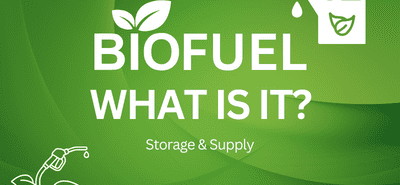Adblue®? What is it?
U EMISSIONS
All commercial vehicle manufacturers have to meet European Union diesel engine emissions legislation, known as Euro 4, which became effective on 1st October 2006.
Diesel engine emissions have progressively reduced since the introduction of Euro 1 in 1993, but the latest and most stringent stage has required completely new technology. Selective Catalytic Reduction (SCR) and Exhaust Gas Recirculation (EGR) both require a form of exhaust gas after treatment. DAF has adopted the former technology, an integral element of which is AdBlue.
WHAT IS ADBLUE®?
AdBlue is a NOT a fuel additive, it is a completely separate system, which never comes into contact with diesel. A Euro 4/5 vehicle has a separate AdBlue tank, identified by a blue filler cap.
AdBlue has been specifically designed to be safe, easy to store and easy to use. It is a colourless liquid made up of 67.5% de mineralised water and 32.5% urea. In the SCR process its role is as a reduction agent that reacts with, and neutralises, nitrogen oxides (NOx).
WHAT IS UREA?
Urea is an organic compound of carbon, nitrogen, oxygen and hydrogen. Other uses include:
• Nitrogen rich fertiliser
• Component of animal feed
• Alternative road/runway de-icer
• Ingredient oin the cloud-seeding agent to produce rain
• Ingredient to promote rehydration of the skin
IS ADBLUE DANGEROUS?
NO – As stated previously, two-thirds of AdBlue is water and the remaining third is an organic compound. This makes AdBlue less corrosive that salt water to metal. It is neither toxic onor dangerous. It is clean, harmless and environmentally friendly. In fact, of all the fluids used in a truck, including screenwash, AdBlue is the least hazardous.
No protective clothing is necessary for handling, and spills can be rinsed off with water. After a spill, you may see white crystals forming after a while, but they are non-corrosive and can be wiped away.
AdBlue starts to freeze at -10°C and is completely frozen at -20°C. When it thaws it remains unaffected.
HOW DO I STORE IT?
Bulk AdBlue storage facilities are available and approximately 90% of operators are expected to bunker AdBlue in the same way they bunker fuel. This allows for filling at their premises because they only need to top up occasionally. A small AdBlue tank gives a long range so it also means that those fleets rarely need to access to AdBlue when they are away from base. The actual amount can vary, considerably dependant on the nature of the work – vehicles working harder produce more NOx during combustion and will require more AdBlue.
DO I REQUIRE SPECIAL DISPENSING EQUIPMENT?
Yes because the fluid crystallizes, over time it effects the way normal fluid handling equipment works. There are however many products on the market design specifically for dispensing Adblue. Pumps, nozzles and flowmeters for adblue can be found here :- Adblue dispensing equipment.
I’VE RUN OUT OF ADBLUE – CONSEQUENCES?
There are no immediate harmful consequences to the vehicle. Lack of AdBlue will not damage the engine in the short term. You are, however, running illegally
Vehicles registered from October 2007 , legislation will take effect in which engine emissions are measured and if excess NOx is detected for any reason (eg. If the vehicle is running out of AdBlue, or if there is a valve failure on an EGR engine), the engine’s torque will be restricted to 60% of its peak level to encourage rectification. However, it will only happen after the information warning system has alerted the driver and the vehicle has come to a complete standstill.
HOW DOES SCR WORK?
Selective Catalytic Reduction involves optimising the fuel injection timing so fuel burns more efficiently and particulate emissions are radically reduced.
Before exhaust gases actually reach the catalytic converter, AdBlue is injected in minute measured quantities into the exhaust system. In the heat of the exhaust stream, the AdBlue hydrolyses (chemical decomposition in which a compound is split into other compounds by reacting with water) and ammonia molecules are released. The ammonia molecules and NOx react in the catalyst, producing harmless nitrogen and water in the form of steam.
The two principal benefits of SCR are relatively longer service intervals and better fuel economy.
SCR/AdBlue has significant advantages over EGR in terms of cost of operation and ability to meet Euro 5 emission levels today. With EGR, up to 30% of the engine’s exhaust gas is recirculated into the combustion process. It reduces oxygen levels, cools the burn and therefore reduces NOx. But it’s hot dirty air rather than cool, clean air and particulates still need to be removed by some form of trap. The result being shorter service intervals, higher operating costs and deterioration in fuel economy.











